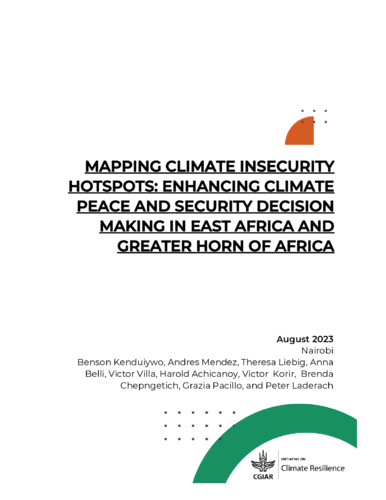Mapping climate insecurity hotspots: Enhancing climate peace and security decision making in East Africa and greater Horn of Africa
Climate change poses significant threats to East Africa and Greater Horn of Africa (EAGHA), impacting critical sectors such as agriculture, nutrition, resource availability, and overall human security. Projections indicate a temperature increase of 0.6°C to 1.6°C by 2050 in EAGHA countries with precipitation levels expected to either increase or remain stable on average. Despite acknowledging the existence of a complex nexus linking climate and conflict, there is still a pressing need to identify specific areas where climate impacts may have a more significant effect on conflict risks and security outcomes. This study aims at mapping the climate-security nexus by identifying locations where different conditions of climate, conflict and socio-economic vulnerabilities co-occur. We use conflict data from Armed Conflict Location and Event Data Project (ACLED), climate data from CHIRPS, TerraClimate, and AgERA5, and socio-economic data from Institute for Health Metrics and Evaluation (IHME). The mapping approach is designed on regular grids (megapixels) of approximately 20 km2 which identifies three categories of conflict (high, moderate, limited), climate conditions, and vulnerability risks. Results from this approach provides an overview of the current hotspots of climate insecurity in EAGHA. We anticipate that the context-specific information on where climate-related security risks have intensified including vulnerable communities will support governments, as well as development, climate, peace, and security stakeholders in improving their targeted interventions to regions highly exposed to climate-related security risks.

